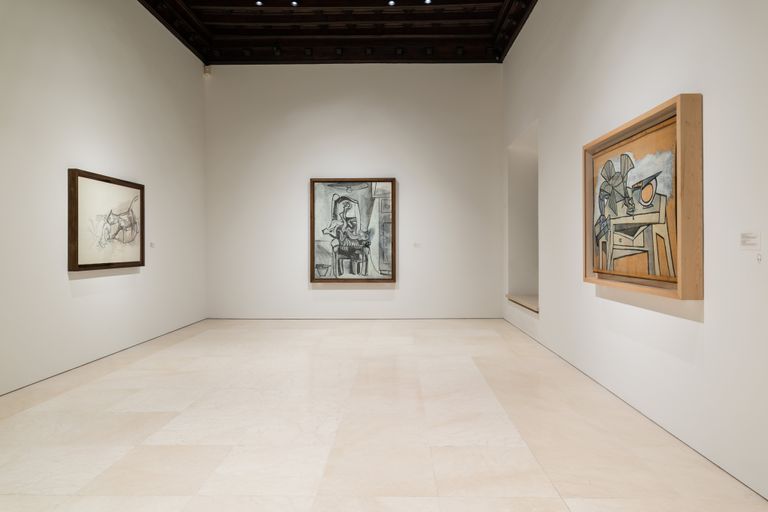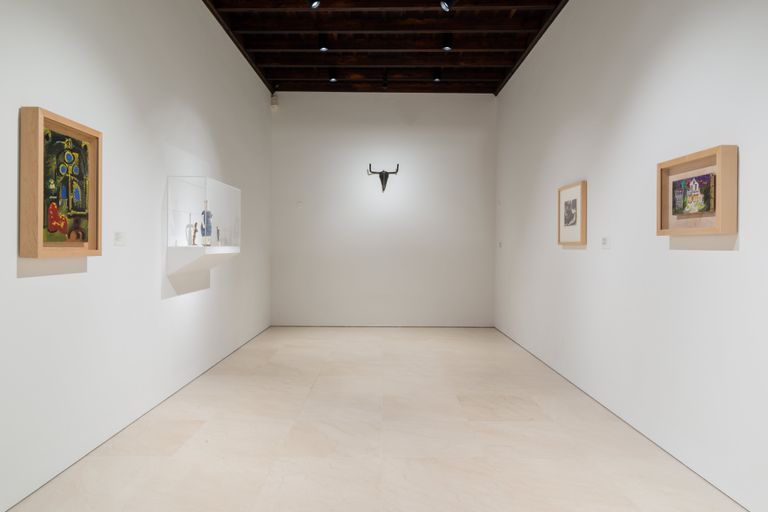
13/03/201701/03/2020
Pablo Picasso
New collection 2017–2020
A view of the exhibition. Photo: Pablo Asenjo © Museo Picasso Málaga
One hundred and sixty-six works from the Fundación Almine y Bernard Ruiz-Picasso – some of them rarely shown to the public – in dialogue with the Museo Picasso Málaga’s permanent collection trace the most significant episodes in Pablo Picasso’s career in a predominantly chronological account that explores in depth the themes, techniques and styles that made him a great twentieth-century artist.
Certain characteristics of Pablo Picasso. New Collection 2017–2020 make it unique and particularly moving. As is well known, the artist was born in Málaga, though he only spent the first ten years of his life there. The Mediterranean port city, which had been a thriving provincial capital in the early nineteenth century thanks to its agriculture, industry and constant trade relations with the English-speaking world, was experiencing a period of cultural decline in 1881, the year he was born.
The precocious artist returned to his native city for the first time in 1901, at the age of nineteen. Decades later, by which time he was world famous, he expressed a wish for his work to be present in Málaga. Picasso thus pursued his fruitful, almost century-long career far from here though, according to his biographers, he appears to have never forgotten his birthplace, for which he felt a mixture of love and rejection typical of those who permanently leave the place where they grew up.
The now chronological arrangement of the works on show in the eleven rooms of the collection surveys eight decades of Pablo Picasso’s artistic production, revealing essential keys to understanding his oeuvre, the period he lived in and his contribution to art history. As the experts invited to contribute their opinions to the catalogue aptly point out, this group of works, the result of merging the holdings of the Museo Picasso Málaga’s permanent collection and the selection of works belonging to the Fundación Almine y Bernard Ruiz-Picasso, showcases the thoroughness and creative skills of a tireless and unfathomable artist. It also attests to the greatness of those who address the dramatic side (feeling) of existence by turning to the grotesque, exaggerating or distorting appearances. Pablo Picasso seats gods and beggars at the same table, encourages mediocrity to live off talent and brings a faint smile to our faces in place of tears.
The Exhibition

A view of the exhibition. Photo: Pablo Asenjo © Museo Picasso Málaga

A view of the exhibition. Photo: Pablo Asenjo © Museo Picasso Málaga

A view of the exhibition. Photo: Pablo Asenjo © Museo Picasso Málaga

A view of the exhibition. Photo: Pablo Asenjo © Museo Picasso Málaga

A view of the exhibition. Photo: Pablo Asenjo © Museo Picasso Málaga

A view of the exhibition. Photo: Pablo Asenjo © Museo Picasso Málaga





